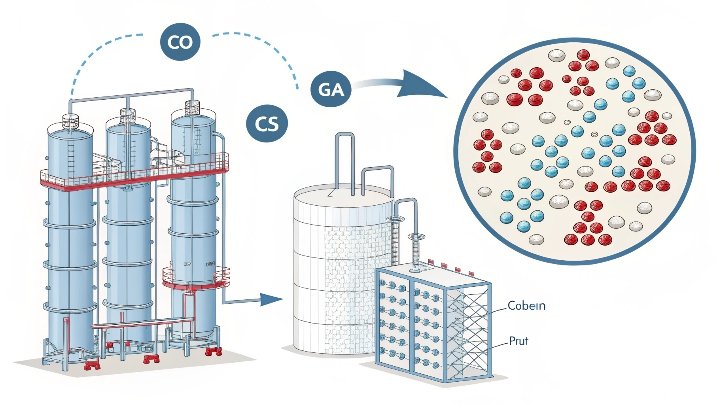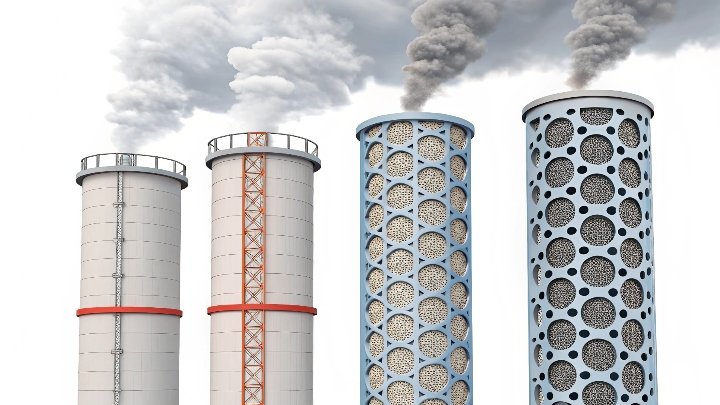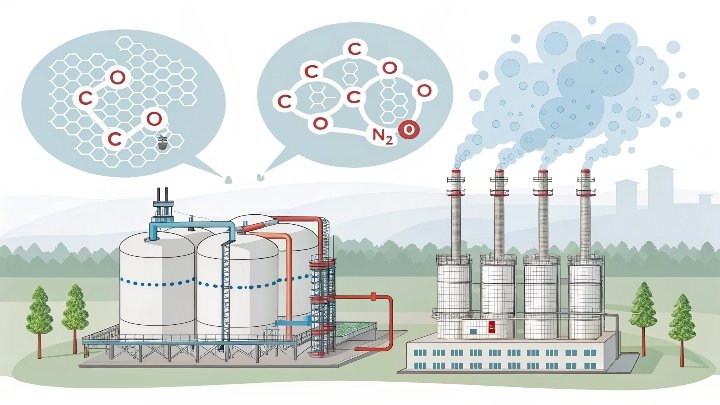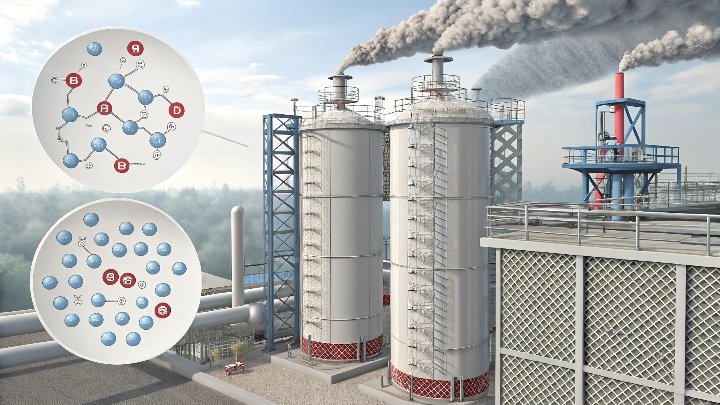I once battled hidden CO₂ in my steam cracking lines. It caused downtime and high costs. Then I discovered 5A molecular sieves. They changed everything.
5A molecular sieves remove CO₂ by selectively trapping those molecules inside their 5-angstrom pores. This lowers contamination, saves catalysts, and maintains product quality. They act like special sponges for CO₂.
I realized that CO₂ is not as harmless as it seems. It slows production, harms catalysts, and causes unwanted complications in my operations. I decided to find a method to target this issue head-on. 5A molecular sieves offered a simple fix. I will share how these sieves work, why they are crucial in steam cracking gas, and where they help in real-world processes. I hope my experience can guide others in choosing the right adsorbent solution.
How 5A Molecular Sieves Work: The Science Behind CO₂ Capture?
I used to believe a small crystal could never manage such a big job. But 5A molecular sieves surprised me with their precise pore size and clever design.
They trap CO₂ based on size exclusion and polar interactions. CO₂ molecules fit inside the 5-angstrom pores, while other gases pass through. This selective uptake helps keep my process free from carbon dioxide and ensures better downstream operations. It is a simple yet powerful approach to gas purification.
Understanding the science behind 5A molecular sieves gave me a whole new appreciation for adsorbent materials. The pore size of 5A molecular sieves is about 5 angstroms, which is well-suited for capturing CO₂ molecules. This is because CO₂ has a kinetic diameter close to 3.3 angstroms, so it can pass into the pore channels. Meanwhile, larger molecules cannot fit through as easily. This size-based separation is one reason why 5A molecular sieves are so effective.
I also learned that 5A sieves have distinct chemical properties. They have a strong affinity for polar molecules like CO₂. The framework structure, usually made from aluminosilicate crystals, has cations that can create additional interactions with carbon dioxide. This attraction ensures that CO₂ is adsorbed more strongly than other gases. It is like a magnet that only pulls in certain targets.
Another important point is regeneration. When the pores fill up with CO₂, we can regenerate the sieves by reducing pressure or increasing temperature. That way, the adsorbed CO₂ is released, and the sieve can be used again. This cyclical process saves resources and money. It also makes 5A molecular sieves more sustainable and practical for continuous operations.
Key Factors in CO₂ Adsorption
| Key Factor | Importance |
|---|---|
| Pore Size | Traps CO₂ selectively based on molecular diameter |
| Polarity | Enhances the attraction for CO₂ molecules |
| Regeneration | Extends the life of the sieves by releasing CO₂ for reuse |
I often tell people that understanding these details helps them see why 5A molecular sieves are powerful tools. They do more than just filter out CO₂; they enable stable and efficient processes. Once I grasped these concepts, I felt confident in adopting these sieves in my system.
Why Steam Cracking Gas Needs CO₂ Removal: The Impact on Efficiency and Purity?
I remember my first steam cracking project. I faced unexpected CO₂ buildup that affected catalysts and product streams. That experience made me value proper carbon dioxide removal methods.
Excess CO₂ in steam cracking gas can harm catalysts, slow reactions, and reduce output purity. Removing CO₂ ensures better yields and smoother operations. This helps me maintain cost-effective processes without sacrificing quality.
At first, I did not think CO₂ could cause big trouble in steam cracking. It seemed harmless compared to other impurities. Then I saw how it could change reaction conditions and hurt downstream equipment. When CO₂ accumulates, it interacts with catalysts and reduces their efficiency. This slows the reaction rate and forces me to adjust temperatures and pressures more often. In some cases, I had to replace catalysts earlier than planned, which cost time and money.
Catalyst Protection
I learned that steam cracking relies on precise catalyst performance to crack hydrocarbons into desired products, such as ethylene. If CO₂ builds up, it can form carbonates on catalyst surfaces. This leads to reduced active sites, which lowers conversion rates. By removing CO₂ upfront, I protect catalysts and maintain optimal reaction pathways. I also avoid unnecessary downtime.
Product Purity
Another challenge was product purity. CO₂ can mix with final product streams, making separation more complicated. Some end products require very low levels of contaminants, so the presence of CO₂ can trigger off-spec materials. This means I lose revenue if I cannot meet quality requirements. With 5A molecular sieves, I remove CO₂ before it becomes a bigger headache.
| Concern | Impact |
|---|---|
| Catalyst Damage | Decreases reaction efficiency and raises costs |
| Product Quality | Causes off-spec products and revenue losses |
| Operational Costs | More regeneration, downtime, and catalyst swaps |
I remember one case where I had to run multiple purifications just to meet purity specs. This was inefficient. Once I started using 5A molecular sieves, my plant operations stabilized. That consistent performance underscored the importance of effective CO₂ removal in steam cracking. For me, preventing problems is better than fixing them later.
Real-World Applications: 5A Molecular Sieves in Action Across Industries?
When I first saw 5A molecular sieves used outside steam cracking, I was amazed. They appear in natural gas processing, petrochemical facilities, and many other applications.
From ethylene production to removing CO₂ in natural gas fields, 5A molecular sieves handle countless tasks. They are versatile adsorbents that keep processes clean and stable. I see them as reliable partners in operations that demand high purity and steady performance.
Over time, I realized that 5A molecular sieves are not confined to steam cracking. Their unique ability to adsorb CO₂ at moderate conditions makes them invaluable across different sectors. I often call them the Swiss Army knives of gas purification because they handle multiple tasks with ease.
Ethylene Production
In ethylene production, removing CO₂ is critical to maintain downstream processes. CO₂ can lead to polymerization problems and can also degrade catalyst performance. By using 5A sieves, I can ensure that the cracking process stays on target. Consistent removal of CO₂ means I have fewer shutdowns for cleaning or catalyst replacement. This stability boosts production and keeps costs lower.
Natural Gas Processing
Natural gas often contains CO₂ that must be removed before liquefaction or pipeline transport. If CO₂ remains, it can freeze in cryogenic conditions or cause corrosion in pipelines. I saw a case where a facility struggled with frozen lines because of unchecked CO₂. When they installed 5A molecular sieves, those problems disappeared. It was a simple solution that had a big impact on reliability and safety.
Other Industrial Uses
Beyond steam cracking and natural gas, 5A sieves appear in many applications. They help separate normal paraffins from branched paraffins in refining. They also assist in the production of high-purity hydrogen by removing CO₂ from gas streams. Whenever I run into a process that needs high purity or stable operations, I check if 5A sieves fit the bill.
| Industry | Role of 5A Molecular Sieves |
|---|---|
| Ethylene | Removes CO₂ to protect catalysts |
| Natural Gas | Prevents pipeline freezing and corrosion |
| Refining | Helps separate normal and branched paraffins |
| Hydrogen | Improves purity by extracting CO₂ |
I remember talking with engineers in other plants. They shared stories of unexpected downtime caused by CO₂ contamination. Each time, the solution turned out to be 5A molecular sieves. That is why I trust them. They solve problems wherever CO₂ gets in the way. Their versatility continues to impress me, and I believe they will remain a mainstay in gas purification for years to come.
Conclusion
5A molecular sieves are simple yet powerful. They remove CO₂, protect catalysts, and boost product quality. I trust them to keep my steam cracking operations efficient and trouble-free.






